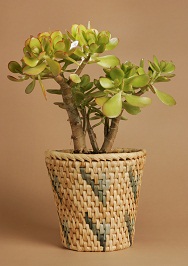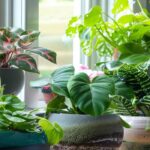Jade Plant
When it comes to succulents, jade (Crassula ovata) tops the list as one of the easiest to grow indoors. This South African native plant with its fleshy oblong leaves and stout heavy-limbed trunk lends architectural interest to the interior and fits just about any decorating scheme. To grow a healthy indoor jade plant, keep these growing tips in mind.Lighting
Jade grows in full sun outdoors, so indoors the plant needs as much light as you can provide. Grow in an unobstructed eastern, southern or western window. If window light is insufficient, provide supplemental, full-spectrum lighting, which can be found for any type of light fixture, including lamps and recessed lighting. Jade grown in insufficient light will experience weak, undersized growth and leaf loss.Planting Jade
As a succulent, jade requires excellent drainage. Plant in a fast-draining soil that contains 25% to 40% pumice or perlite with the remainder composed of a light, organic potting soil, such as a cactus mix. Also add 10% to 20% horticultural sand, if available.Watering
Jade is highly susceptible to root rot, so avoid overwatering. Wait until the first 2 to 3 inches of soil has dried and then soak the plant in the sink and let it drain. Never let jade plant pots sit in saucers of water, as this will quickly lead to their demise. In the fall and winter months, jade may not need watering for weeks at a time.Humidity
A desert plant, jade likes low humidity, ranging from 30% to 50%. Grow in a location of the home that has good air circulation and avoid grouping jade with other plants, as plants humidify one another. If you live in a dry climate, place jade near doorways and open windows where it will get an abundance of dry air. If you live in a humid climate, keep jade near sources that dry the air, such as air-conditioners and heaters.Fertilizing
Feed jade monthly in the spring and summer months with a ½-strength solution of an organic, all-purpose plant food. Also feed once a year with a worm compost tea in the spring, which boosts biological activity in the soil.Flowering
Outdoors, mature jade bloom in the winter and early spring months in North America with clusters of tiny pinkish-white, star-shaped blooms. Outdoors, the shortening daylight hours in late autumn and winter cause jade to produce these blooms. Indoor grown mature jade exposed to nighttime lighting isn’t likely to bloom indoors, unless you can provide the plant with 10 to 12 hours of darkness each night.-
- Learn more about Jade and bringing tender succulents and plants indoors for the winter months at The Hoosier Gardener.





